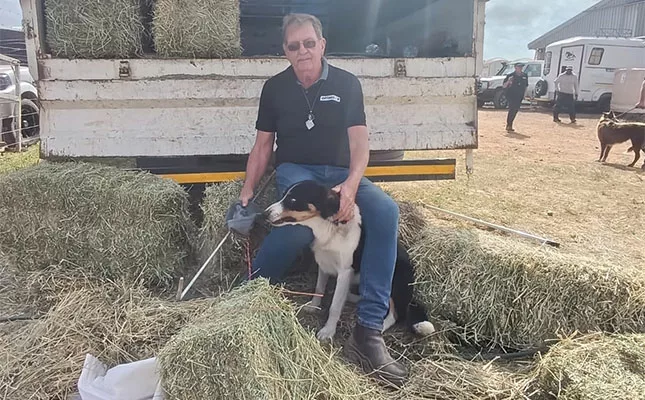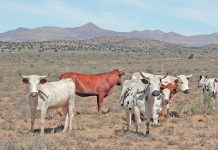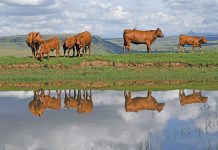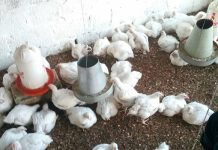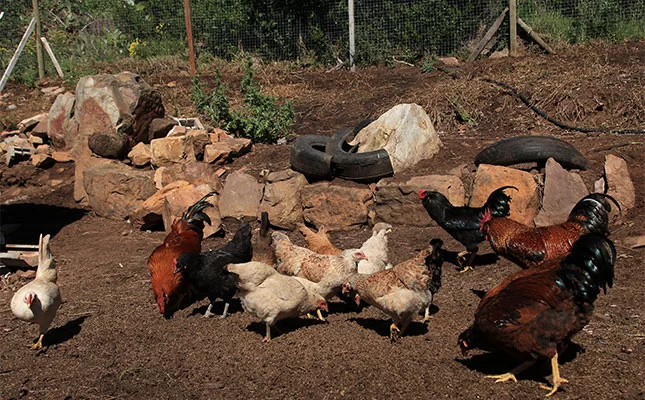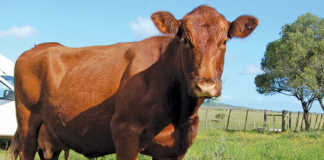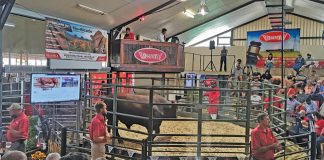Animal breeding is based on selection, which is based on genetics. With good information about the animal’s genetics, you can make better selection decisions and improve your herd (and profits) faster.
Estimated breeding values (EBVs) are the value of an individual as a genetic parent. The lower the heritability of a trait under selection, the slower the herd will improve. A trait that is 40% heritable, means that 40% of the difference between animals is due to genetics (the EBVs), while the remaining 60% is due to the difference in management and environment.
EBVs enable you to compare individuals of the same breed from different herds. They are expressed as a unit of measurement and published with an accuracy value (%). EBVs can change annually as new information is analysed.
To estimate breeding values, you need to know: own performance, pedigree data and progeny data.
As seen in Figure 1, if the individual has no progeny, its records contribute less to the EBV than the pedigree records. As its progeny increases, the contribution to the individual’s breeding value will increase and the contribution of the individual and the pedigree will decrease.

Accuracy
When estimating the breeding value for an individual, remember that the sire and dam each contribute half of their EBV to their progeny. For example, Sire A has a breeding value of +16 for weaning weight, while Dam A has a breeding value of +6 for weaning weight.
The sire contributes half, which is +8, and the dam +3, so their progeny will wean +11kg heavier. The accuracy of a breeding value is the difference between the true breeding values and the expected breeding values. Accuracy (%) is based on the amount of performance data available on the animal and its close relatives, particularly the number of progeny.
The heritability of the trait and the genetic correlations with other recorded traits are also important. Accuracy is an indicator of a breeding value’s reliability and the risk entailed when a specific trait is selected. Accuracy is low, medium or high (see Table 1).

If an animal has 40% accuracy for a trait, it won’t be very reliable at that point and the risk taken will be very high. On the other hand, it means that the breeding value has a 60% chance of changing in a positive (or negative) direction. If an animal has 80% accuracy, the risk is very low. The breeder can be assured that the animal will perform according to the breeding value.
Values available
Different breeding values are available for different selection traits. These include:
- Calving ease (%): This is based on calving difficulty scores, birth weight and gestation length. More positive EBVs indicate easier calving.
- Birth weight (kg): This is based on the measured birth weight of progeny, adjusted for dam age. The lower the value, the lighter the calf at birth and the lower the likelihood of a difficult birth. This is particularly important when selecting sires for heifers. EBVs for growth/weight traits are estimated – for example, 200-day weight, 400- day weight, 600-day weight and mature cow weight.
- Milk (kg): This is an estimate of an animal’s milking ability. For sires, this indicates the effect of the daughter’s milking ability inherited from the sire on the 200-day and 400-day weights of her calves. For dams, it indicates the cow’s own milking ability.
- Scrotal size (cm): This is calculated from the circumference of the scrotum and adjusted to 400 days of age. This EBV is an estimate of a sire’s genetic merit for scrotal size and is positively correlated to age of puberty in female progeny.
- Days to calving (days): This indicates the fertility of the sire’s daughters. It is the time between when the female is first exposed to a bull and the day it calves. A negative EBV indicates a shorter interval from bull-in date to calving, and therefore higher fertility. EBVs for carcass characteristics are also estimated. These include eye muscle area, rib fat and retail beef yield.
Phone Amari Bornman on051 446 0580 or email her at [email protected].

